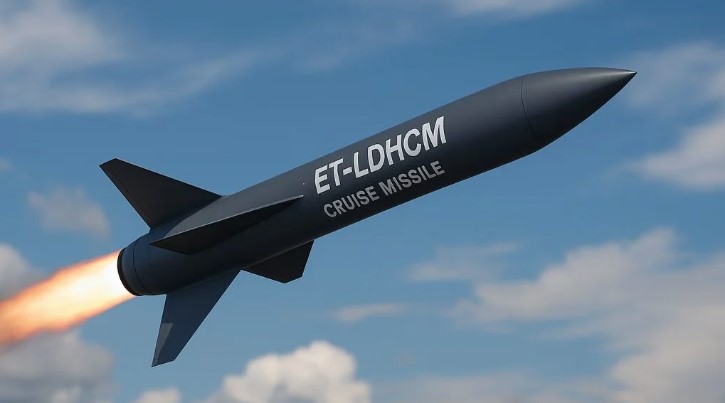India is getting ready to test one of its most powerful and advanced missiles ever made — the ET-LDHCM, which stands for Extended-Range, Long-Duration Hypersonic Cruise Missile. This missile is part of a highly secret project called Project Vishnu, which has been under development for many years by India’s top defense scientists and engineers.
What Is the ET-LDHCM and Why Is It Important?
What makes the ET-LDHCM so special is its incredible speed and range. It can fly at Mach 8, which means it moves eight times faster than the speed of sound. That’s about 11,000 kilometers per hour — fast enough to travel from Delhi to Mumbai in just a few minutes. Along with that, the missile can hit targets 1,500 kilometers away, allowing India to strike deep inside enemy areas if needed.
The ET-LDHCM is indigenously developed, meaning it has been built entirely within India using local knowledge, materials, and talent. This is a major achievement because very few countries in the world — like the United States, Russia, and China — have successfully created and tested such hypersonic weapons.
China Unleashes Hypersonic Missiles to Strike Anywhere in 30 Minutes
This missile is designed not just to fly fast but also to be very difficult to stop. Unlike regular missiles, it can change directions while flying and avoid being detected or hit by enemy defense systems. This makes it especially useful for modern warfare, where speed and surprise are key.
Inside Project Vishnu: India’s Secret Hypersonic Program
Project Vishnu is the name given to this top-secret missile development program. Under this project, teams of Indian scientists and engineers have been working silently for years to create a missile that can match — or even beat — the best in the world. The ET-LDHCM is the final result of that effort.
The missile has been designed to perform under extreme conditions, including very high speeds, high temperatures, and long-distance travel. It uses advanced materials that don’t melt or break apart even when the missile gets super-hot from flying so fast through the atmosphere.
According to sources close to the Defence Research and Development Organisation (DRDO), which is the agency behind India’s biggest defense innovations, the ET-LDHCM is almost ready for its first big test. Preparations are in the final stages, and the team is getting ready to check how well the missile performs in real-world trials.
This test will look at everything — from the missile’s speed and accuracy to how it handles guidance and navigation during flight. Experts will also check how well it avoids being tracked by radars and how stable it stays while flying at hypersonic speeds.
What Makes Hypersonic Missiles So Dangerous?
Hypersonic missiles like the ET-LDHCM or Vishnu are seen as game-changers in military technology. Unlike traditional ballistic missiles, which go up into space and then fall back down, or cruise missiles, which fly slower at lower heights, hypersonic missiles do a bit of both — but much faster and with better control.
They travel through the atmosphere at very high speeds and can maneuver in flight, which makes them very hard to predict and nearly impossible to stop. Today’s missile defense systems are built to deal with older types of missiles, and many countries are still trying to figure out how to defend against hypersonic ones.
Pakistan’s War Toys Exposed—India Gains Secret Data on J-10, PL-15, and Turkish Drones
This means that any country with hypersonic missile technology has a strong advantage. It allows them to strike important enemy targets — like military bases, communication centers, or supply routes — before the enemy even realizes what’s happening.
India’s decision to build and test such a missile shows that it is serious about developing modern, world-class weapons systems. It also shows a strong push towards being self-reliant in defense and military technology, rather than depending on foreign weapons.
When the Vishnu Missile is tested, it will not just be a scientific event — it will also be a moment watched closely by defense experts all over the world. Many will be looking to see if the missile performs as expected and how it compares to other hypersonic missiles currently in use or being developed.
India now stands on the edge of joining the elite group of nations that have mastered this powerful and fast-emerging technology.

